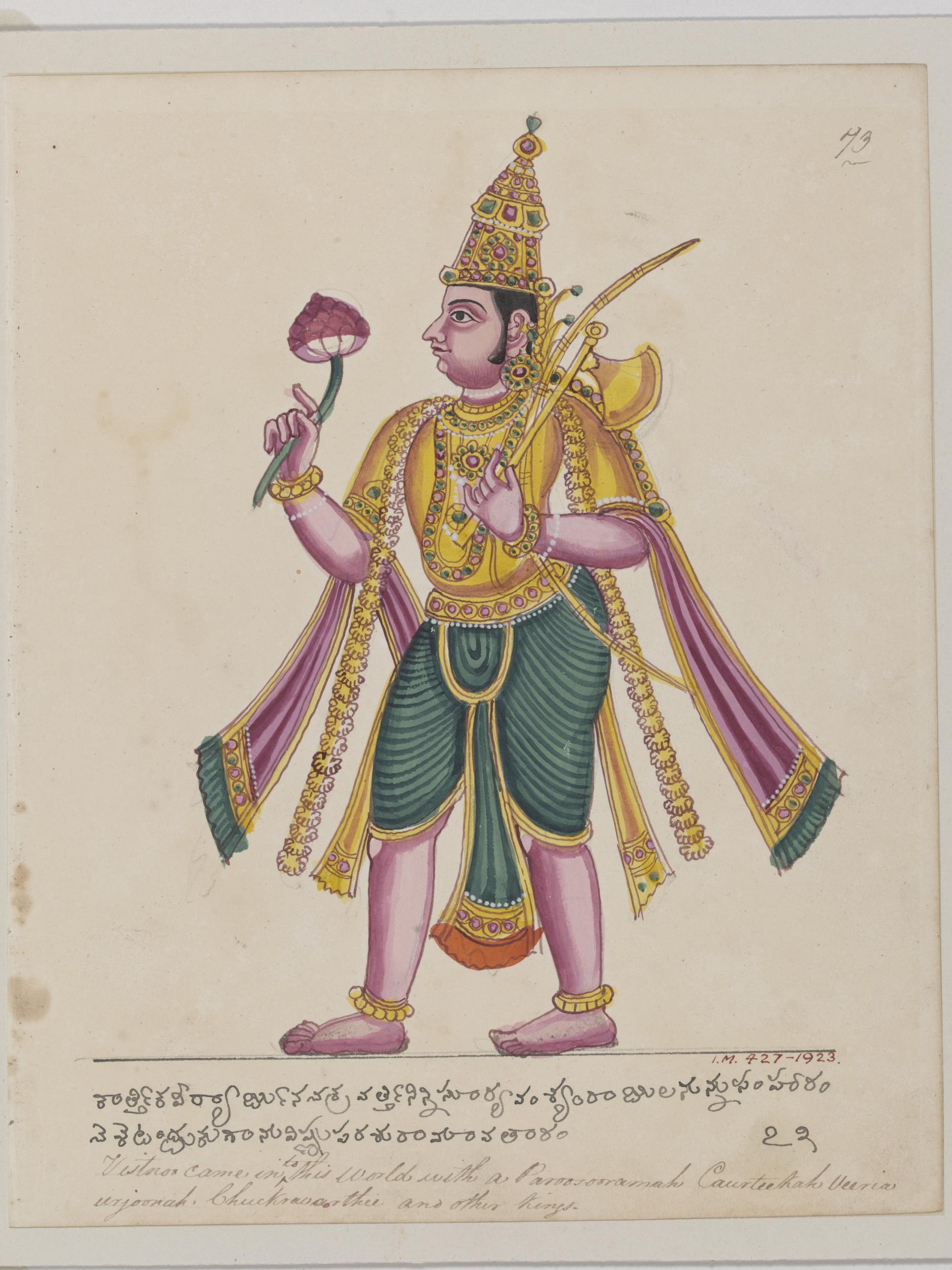Parashurama is the sixth incarnation of the supreme Hindu God, Vishnu. Like most avatars of Vishnu, he descended on the earthly plane of existence to right wrongs and restore the path of righteousness. He is often depicted holding an ax and a lotus bud. Parashurama in Sanskrit means Rama with an ax. He features in many Hindu Puranic texts as well as the Mahabharata and the Ramayana as the son of Jamadagni, a sage of the Brahmin (priest) caste, and Renuka, a princess of the Kshatriya (warrior) caste.
Parashurama was arguably one of the most ruthless avatars of Vishnu. There is a story of his life where his father suspected his mother of an unchaste thought and ordered Parashurama to behead her - he obediently complied. Later in his life, Parashurama exacted gruesome vengeance for the murder of his father by a member of the Kshatriya caste by killing all male Kshatriyas on earth. The surviving wives gave birth to new generations of men that Parashurama killed 21 successive times. Five lakes were filled with their blood.
This painting is rendered in the Company style. ‘Company paintings'; or Kampani Kalam developed in the Indian subcontinent around the 18th and 19th centuries. These paintings adapted traditional elements from the Rajput and Mughal style of paintings in softer palettes with Western watercolor technique. This artwork comes from a set of 100 paintings made in Trichinopoly in Southern India. Its patron is likely a person with scholarly interests since such detailed studies of Hindu deities were not a common theme among Company works.
- Maya Tola
P.S. To get to know more and see the Company School paintings click here!


 Unknown Artist
Unknown Artist